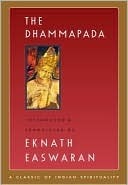More on this book
Community
Kindle Notes & Highlights
Their principle was neti, neti atma: “this is not the self; that is not the self.” They peeled away personality like an onion, layer by layer, and found nothing permanent in the mass of perceptions, thoughts, emotions, drives, and memories that we call “I.”
Nothing in it happens by chance – not because events are predestined, but because everything is connected by cause and effect. Thoughts are included in this view, for they both cause things to happen and are aroused by things that happen. What we think has consequences for the world around us, for it conditions how we act.
no divine agency is needed to punish or reward us; we punish and reward ourselves. This was not regarded as a tenet of religion but as a law of nature, as universal as the law of gravity.
The innocent pleasures of his life seemed fragile, edged with the poignancy of something not quite real enough to hold on to.
We have no more idea of what life is really like than a chicken has before it hatches. Excitement and depression, fortune and misfortune, pleasure and pain, are storms in a tiny, private, shell-bound realm which we take to be the whole of existence.
The Buddha calls this “swimming against the current”: the concerted, deliberate effort to dissolve self-interest in the desire to serve a larger whole, when eons of conditioning have programmed us to serve ourselves first.
Your goal is to reach such a depth that even in dreams the awareness of unity remains unbroken. Then every corner of the mind is flooded with light. The partitions fall; consciousness is unified from surface to seabed. You are awake on the very floor of the unconscious, and life is a seamless whole.
Samsara, the ceaseless round of birth and death, has no beginning, but it has an end: nirvana. Nirvana has a beginning, but once attained it has no end.
To the Buddha, everything is a dharma, a mental event. We don’t really experience the world, he observes; we experience constructs in the mind made up of information from the senses.
In profound meditation, one goes beyond sensory appearance and eventually beyond the very structure of the phenomenal world: time, space, causality. Time stops; there is only the present moment. Then everything is pure energy, a sea of light.
Instead of seeing life as a flux, we insist on seeing what we want it to be, a collection of things and experiences with the power to satisfy.
Instead of seeing our personality as it is – an impermanent process – we cling to what we want it to be, something real and separate and permanent.
We are trying to get from life something that is not there
One way to visualize what happens in meditation is to think of the raw stuff of consciousness as clay, shaped on the potter’s wheel of the mind. The shapes this clay has taken – strong desires, fears, attitudes, and aspirations, every habitual way of thinking – determine a person’s behavior. Meditation slowly allows access to a level of awareness where these rigid shapes can be softened and made pliable again, until finally consciousness becomes like amorphous clay. Then the mind has no habits. It rests in its native state – calm, clear, adaptable, and endlessly responsive. Action then is no
...more
Remember that this body will soon lie in the earth without life, without value, useless as a burned log.
Instead of being victimized by experience, they make conscious use of it to remove undesirable traits, reshaping their character as a carpenter shapes a piece of wood (80).


